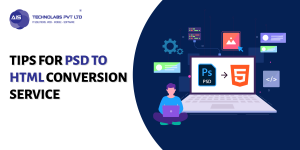Shopify is one of the most reliable e-commerce development platforms. However, the problems lie not with the platform but with the development practices. You can choose to make your eCommerce website load faster and ensure a higher conversion rate and improved on-page experience. Also, while you are choosing the right platform to build a beautiful eCommerce website, using these few points, you can evaluate the knowledge and expertise of any Shopify development company for optimized web pages and better ROI.
Introduction
If improving your site speed is not on your list right now, it should be. A faster loading site has its benefits for retaining customers and capturing more potential customers. By keeping your approach consistent and using some of the best practices shared by us through our experience and knowledge, you can start enjoying more traffic and sales on your website almost instantly.
You should monitor and optimize the web pages, server, and database regularly for improved results. Also, take the help of the recommended tools in the blog for better decision-making. For optimal results, periodically speed test and optimize. Site testing should be built into your broader optimization strategy. It must be conducted for any new and modified pages and periodically reviewed all across your site.
Page speed and why you should care
Page speed is a ranking factor for a couple of years now. Companies are putting efforts into making sure their SERP positions are always growing higher. The overall user experience of the site plays an essential role in making sure it happens. And hence, page’s loading speed plays a catalyst role in your SEO success.
Page speed is defined as the time taken to display all the content on the specific page and the time a browser takes to receive the web server's first byte. Or, in layman's terms, the first set of information from the server.
Page speed helps in improving the on-page user experience on your site. It makes your pages more efficient and provides a better experience. This powerful metric helps in conversion rate too. About a quarter of total users would click away if a page takes longer than 3 seconds, according to Kissmetric infographic. Furthermore, Google announced page speed and page experience as an included ranking factor for its search index. These factors are important to improve your visibility on search engines.
How to speed up your Shopify website?
As the need for faster page loading elevated, so did the research and need for persuasive statistics on what makes the pages slow. A heavy image on the web page, for example, can be a reason. Imagine the number of product images you have on your e-commerce website. Now, consider if you don't optimize them. What would it do to the loading speed? A Shopify development agency should understand the complexities behind making fast-loading pages.
Image optimization, distributing content delivery network, and JavaScript compression can help you optimize your web pages. Equally effective practices such as keeping the code clean and well-designing the page to be consumed only after the entire content is loaded are highly recommended. Here is how you can reduce the loading speed of your Shopify website:
Performance analysis
A Shopify development company can only do as much as to follow the recommended ways to optimize their development practices for fast-loading pages. But by using tools, they can help you optimize them even further. Today we have the tools that help you to improve your site. A good Shopify web development company would always recommend you the due process.
These tools help you analyze mobile and desktop performance with page speed insights. It pretty much sorts out the work. For example, the Google PageSpeed insight tool provides you a PageSpeed score and page speed suggestions for faster loading pages. The suggestions include:
- Optimization of images
- Minimizing CSS
- Minimizing JavaScript
- Eliminate the render-blocking JavaScript and CSS in the above the fold content
- Use browser caching and reduce server response time
- Avoid landing page redirects
- Gzip Compression
Another trusted tool (recommended by Google) is the Test My Site Tool. It allows you to analyze your website for mobile-friendliness and mobile page speed. It is user-friendly; all you have to do is
- Enter your website URL.
- Allow Google to scan the site; it typically takes a few minutes.
- Click on “Get My Free” for a free report.
- Enter your email address.
As a leading Shopify Development agency, we also use some other tools like Gtmetrix and Pingdom for more clarity and faster loading webpages.
Optimize for Mobile with Accelerated Mobile Pages
Accelerated Mobile Pages allow your website or webpage to load faster on mobile devices. In the times of smartphones and tablets, you must leave no stone unturned to make your web page and site responsive to mobile devices. Accelerated Mobile Pages can be your solution.
Accelerated Mobile Pages or – AMP is a standard framework designed for publishers. It helps in creating faster loading webpages on mobile devices. It is essential that your website is mobile-ready and loading fast. For this, Shopify allows you to easily generate AMP pages for your site quickly and efficiently using tools. We use tools such as FireAMP and RocketAMP to improve the page loading time on mobile. We can also help you make a customized Shopify API and integrate it into the AMP pages website. Another recommended procedure is by creating AMP versions of your landing pages.
Compress images
Shopify makes sure you get as much scalability as an eCommerce platform as possible. Thus, it offers you a plethora of options for allowing different image formats.
Shopify allows you to add the images in different formats, including the popular ones such as JPG and JPEG, Progressive JPEG, PNG, and even GIF. However, if the images are not optimized, they might slow down your website/webpage loading speed.
Image compression is one of the most commonly used practices when it comes to optimizing web pages. It helps you to gain a better conversion rate. Thus, make sure your hired Shopify development company is following the right procedure. It would help if you made sure that the images are of acceptable size and keep as few as possible images on a single page. Also, the quality of the image is not to be compromised at all.
Free tools like tinypng.com or tinyjpg.com have helped many companies to reduce the size of the images as recommended and gain SEO benefits. Once optimized, the page load speed automatically improves. If the Shopify web development company uses the existing pictures on the Shopify store, make sure they compress those. Tools like image optimizer and crush.pic are free to use and offer you compressed image files without any quality loss.
Choose a Lightweight theme
Themes can cause a delay in page loading. Shopify offers you beautiful minimalistic e-commerce website templates, to which you can make customizations. It can help you in improving your webpage loading speed. Before selecting any image from Shopify, you must check it for:
Responsiveness
Responsive themes help in making the website/web pages mobile-friendly. As discussed earlier in the blog, about 50% of the sales on e-commerce stores today are happening over smartphones and tablets. It means you can take no chances. But to choose a theme that offers pre-optimized responsive pages for faster loading webpages.
Up-to-date Theme
Check if the theme has an up-to-date copy. Go for live previews to check the theme thoroughly. It would also help you in preventing the functionality and animation of the theme. Another way to check the theme loading speed is by running it through Google PageSpeed Insight. Check if there are any suggestions and if it can be made faster without any complexities. Also, keep your theme up to date once you decide on it.
Remove Inactive apps
One of the things which is a total let down from a platform like Shopify is the addition of JavaScript/CSS files to your store. As people start downloading your app, the platform begins adding some amount of JavaScript/CSS file to your store, which slows down the app. It becomes even more problematic when people don’t use your application. Still, the JavaScript and CSS file is running in the background. It slows down your website massively.
Better response time
You can optimize the server to improve your page loading speed. Regularly clean up your database and choose the right CMS setting for better results. Another way of optimizing the server is by opting for a faster DNS provider.
This practice can help you to improve the TTFB or Time To First Byte. It is the time taken by a browser to receive the first byte of information from a server. This entire time can be broken-down into three parts or three processes through which a request has to go.
- Request sent.
- Time taken by the server to process the request, and
- Time taken in sending the requested information to the browser.
Tools like WebPageTest can help you evaluate TTFB. Ideally, it should be under 200 ms. If not, you can use different methods to optimize them. For the first and third step, you can use CDN, as it helps in reducing the distance between the server and the visitor’s browser.
Other than that, for the second step, you can do a lot, but a few hands-down tips by us as the best Shopify development agency are:
Configure your CMS
Configuring the CMS can help in optimizing the speed of your website. It is responsible for content management and content handling. Check if there are any settings specific to your CMS that you can disable/enable to boost response time.
Clean up your database
The server needs to query a database to find relevant information and process the visitor's request. This process can become slow if the database is poorly optimized. One of the best ways to optimize it is by server-side caching. It helps to store the copy of pages without consulting the database and thus process the request faster.
Premium DNS
The DNS is responsible for turning your domain name into an IP address. The DNS provider stores your IP address. An expert Shopify web development company would choose to consult the provider to provide the exact IP that maps your domain. Just by opting for the right DNS provider, you can reduce load time to a great degree.
How can AIS Technolabs help you to boost your Shopify website speed?
Many changes are very technical, and a Shopify development agency needs to have hands-on experience to make those. One mistake and your website is taking time to feel like an eternity to your users to open the webpage. We suggest you the right development practices. And with our 15+ years of experience and in-depth Shopify expertise, we give you a website that brings down your page loading speed to 3-5 seconds.
Changes made on the server-side are quite technical. So, it is better to go with someone like us who has experienced optimization developers. Our expert Shopify developers are seasoned and use recommended tools and techniques to ensure no mistake is made. Dedicated hosting package and assessment of certain functionality make us limitless to deliver visually stunning, fast loading, user-friendly Shopify websites.
Conclusion
In hopes you would be soon implementing these. suggestions to make your websites faster than ever before, we would love to hear from you about them. Also, we recommend you to choose an expert shopify development agency, as some of these changes require expertise and experience.
Start with these easy and practical tips for immediate improvement and enjoy the benefits of having faster loading web pages in your conversion rate, reduced bounce rate and boosted sales. Surely, there are other things too you can do to progressively improve your website, but these are some of the easiest and best practises.






